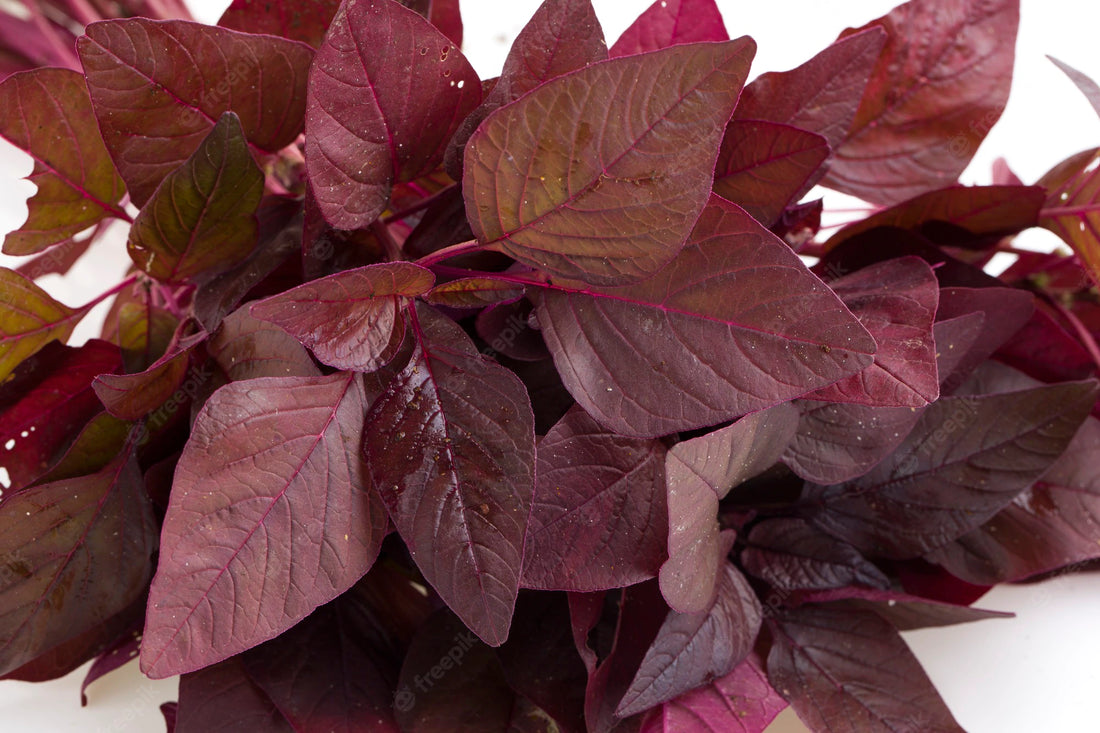Looking to add a splash of color to your garden, why not try red amaranth? This plant is easy to grow from seed and produces edible leaves that have a delicious taste.
In this guide, we'll teach you everything you need to know about growing red amaranth, including the different colors and flavors it can offer. We also offer growing tips and resources to help you start your seeds.
Cultural Requirements
Red amaranth is a popular superfood that has been prized for its nutrient-rich leaves since ancient times. Its exact are unknown, but it is thought to have originated in Africa or the Americas. Early references to amaranth red can be found in Aztec and Mayan texts. They describe the plant as a valuable source of food and medicine.
Amaranth plants continued to be an important part of the diet in Central and South America after the European conquest. In the 17th century, English settlers brought red amaranth to North America, where it quickly became naturalized.
Today, red amaranth is cultivated all over the world and is grown across the United States in various USDA zones.
Is Amaranth Edible?
Amaranth is a highly nutritious grain, and it is especially rich in iron and calcium. It is also a good source of protein and fiber. The leaves and seeds of amaranth are edible, and the plant can be used in a variety of dishes. Amaranth leaves have a slightly bitter taste and are often used as a green leafy vegetable in salads.
The seeds of amaranth can be ground into flour or popped like popcorn. Amaranth is also used to make a type of porridge called atole, which is popular in Mexico. Whether you are looking to add some flavor to your dishes or wanting to try something new, amaranth is a great option.
Growing Amaranth From Seed
Amaranth is a popular grain crop that is easy to grow from seed indoors or by sowing seeds in your garden. The ideal soil conditions for amaranth are loamy and well-draining, with a pH level between 6.0 and 7.0. Amaranth prefers full sun but will also grow in partial shade. The optimum temperature for amaranth growth is between 70 and 75 degrees Fahrenheit.
Amaranth can be grown in all USDA growing zones. When growing amaranth, it is important to keep the soil moist but not waterlogged. Amaranth seeds will germinate in 7-10 days. Once the plants have reached a height of 6-8 inches, they can be thinned to allow for proper spacing.
It complements many companion plants. When paired with other plants, amaranth can help to improve yields, deter pests and diseases, and provide complementary color and texture. Taller vegetables like corn or tomatoes can benefit from amaranth's ability to shade out weeds and prevent moisture loss by growing to 18 inches.
Amaranth is also known to attract pollinators like bees and butterflies, making it a valuable addition to any garden that relies on insect pollination. Finally, the brightly colored leaves of amaranth make it an ideal candidate for companion planting with more subdued-hued plants.
Amaranth is ready to harvest when the grain heads turn brown and dry. For best results, harvest amaranth in the morning hours before the plants have a chance to heat up in the sun. It can be harvested by hand or with a machine.
Cooking With Amaranth
Amaranth is a nutrient-rich grain that has a nutty, earthy flavor. It can be cooked in a variety of ways, making it a versatile ingredient for any kitchen. Amaranth can be boiled like rice or quinoa, or it can be ground into flour and used to make breads and pastas. It can also be popped like popcorn or used to make cereals and granola.
Because of its high protein and fiber content, amaranth is an excellent choice for anyone looking to boost their nutrition.
Additional Resources
See our collection of red amaranth seeds for sale, along with other varieties. Enjoy our Growing Guide for lettuce and greens in the Resource Center, along with our companion guide for growing microgreens.


